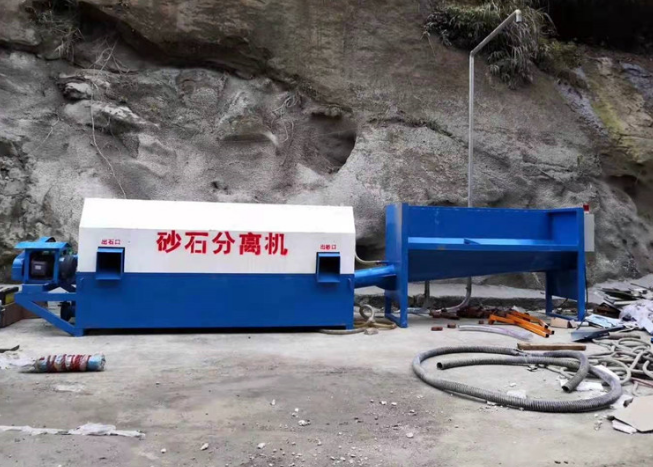What is a Concrete Recycling Plant?
Sustainability has become a key focus in the construction industry, leading to increased interest in practices like material reuse and recycling. Concrete recycling plants and concrete recycling systems are at the forefront of this movement, designed to process and repurpose demolition waste into valuable materials for new construction projects. These facilities not only help reduce the environmental impact of construction activities by minimizing landfill waste but also offer a cost-effective alternative to virgin materials. By integrating concrete recycling systems into their operations, construction firms can contribute to a more sustainable future while also gaining economic benefits.
Concrete recycling plants play a crucial role in the construction and demolition industries by processing old concrete into reusable materials. These plants help reduce waste, lower construction costs, and support environmental sustainability. In this article, we will explore what a concrete recycling plant is, how it works, and its benefits to the environment and the economy.
Understanding Concrete Recycling Plants
A concrete recycling plant is a facility that processes and repurposes old concrete from demolished structures, roadways, and other construction sites. The primary goal of these plants is to transform waste concrete into new, usable products such as aggregate, road base, or raw materials for new concrete production. This process not only diverts significant amounts of waste from landfills but also conserves natural resources by reducing the need for new raw materials.
How Concrete Recycling Plants Work
Collection and Transportation
The first step in the concrete recycling process is the collection and transportation of concrete debris. Construction sites, demolition projects, and road repairs generate large quantities of concrete waste. This waste is then transported to the recycling plant, either by trucks or specialized containers.
Crushing and Screening
Once the concrete arrives at the recycling plant, it undergoes a series of crushing and screening processes. The concrete is fed into a crusher, where it is broken down into smaller pieces. The size of these pieces can vary depending on the intended use of the recycled material. After crushing, the material is screened to remove any contaminants such as steel rebar, wood, or other debris. This ensures that the recycled concrete is of high quality and suitable for further processing.
Separation and Cleaning
The next step involves separating and cleaning the crushed concrete. Powerful magnets and other separation technologies are used to remove any remaining metal components, such as rebar or wire mesh. The cleaned concrete is then washed to remove dirt, dust, and other impurities. This step is crucial for ensuring that the recycled concrete meets the required specifications for its intended applications.
Grinding and Refinement
In some cases, the recycled concrete may undergo additional grinding and refinement processes to produce finer aggregates or specific material grades. This is especially important for applications where precise particle size and consistency are required, such as in the production of new concrete.
Stockpiling and Distribution
The final step in the concrete recycling process is stockpiling and distribution. The processed concrete is sorted into different grades and sizes and then stored in stockpiles. These materials are then ready to be distributed to construction sites, road projects, and other applications where recycled concrete is needed.
The Benefits of Recycling Concrete
There are many benefits related to sustainability and quality that result from concrete recycling:
- Less dependency on finite natural resources: By recycling used concrete, less extractions from the earth are required and the environmental effect of extraction and transportation of new resources is also reduced or removed altogether.
- Decarbonization of the construction industry: Less emissions are released with concrete made with RCA than with virgin resources.
- Less landfill waste: It can’t go without saying that concrete recycling also eliminates or substantially reduces the amount of waste that ends up in landfills. It can also alleviate the high costs related to landfill levies and save your business money.
- Lighter concrete: Recycled concrete can be lighter than newly produced concrete, which translates to more volume per ton per order.
- Reduced costs: Concrete recycled can be cheaper to produce since less raw materials and transportation costs are required.
Benefits of Concrete Recycling Plants
Environmental Benefits
Concrete recycling plants offer significant environmental benefits. By diverting concrete waste from landfills, these plants help reduce the overall volume of waste generated by construction and demolition activities. Additionally, recycling concrete conserves natural resources by reducing the need for new raw materials such as gravel, sand, and cement. This, in turn, reduces the environmental impact associated with mining and quarrying activities.
Economic Benefits
From an economic perspective, concrete recycling plants provide cost savings for construction projects. Using recycled concrete as a substitute for new materials can significantly reduce material costs. Furthermore, recycling plants create job opportunities in the waste management and construction industries, contributing to local economies.
Reduced Carbon Footprint
The production of new concrete involves significant energy consumption and greenhouse gas emissions. By recycling concrete, the carbon footprint associated with concrete production is reduced. The energy required for crushing and processing recycled concrete is substantially lower than that needed for producing new concrete from raw materials, leading to lower overall emissions.
Sustainable Construction Practices
Concrete recycling plants support sustainable construction practices by promoting the reuse of materials. This aligns with the principles of the circular economy, where materials are kept in use for as long as possible, and waste is minimized. By incorporating recycled concrete into construction projects, builders and developers can contribute to more sustainable and environmentally responsible building practices.
Applications of Recycled Concrete
Recycled concrete has a wide range of applications in the construction industry. Some common uses include:
- Road Base: Recycled concrete is often used as a base material for road construction. It provides a stable foundation and reduces the need for new aggregate materials.
- Aggregate for New Concrete: Recycled concrete can be used as aggregate in the production of new concrete. This helps reduce the demand for virgin aggregate and supports sustainable construction practices.
- Landscaping Materials: Crushed concrete can be used in landscaping projects for pathways, retaining walls, and decorative features.
- Drainage Systems: Recycled concrete is suitable for use in drainage systems, such as French drains and stormwater management systems, due to its permeability and durability.
Contact Us for Concrete Recycling Solutions
As a leading supplier of recycled concrete aggregates, we provide high-quality materials for your construction needs. Our state-of-the-art recycling plant ensures consistent quality and reliable service. Contact us today to learn more about our products and how we can support your projects with sustainable concrete solutions.














